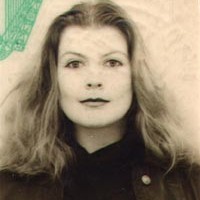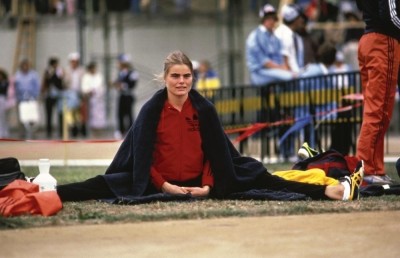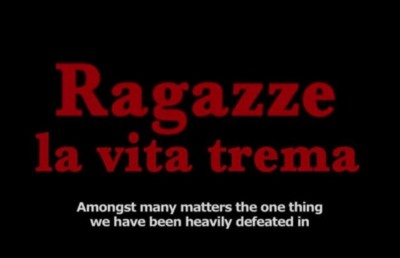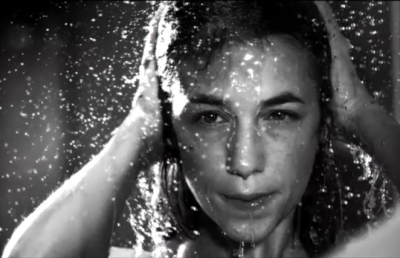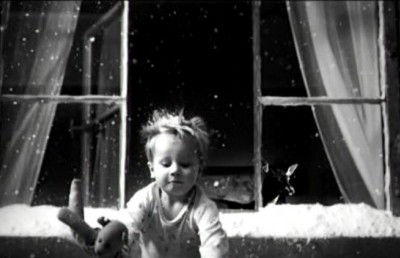Mythology and the Female Hero in Robert Towne’s Personal Best: Part 1
The Sports Film and Beyond
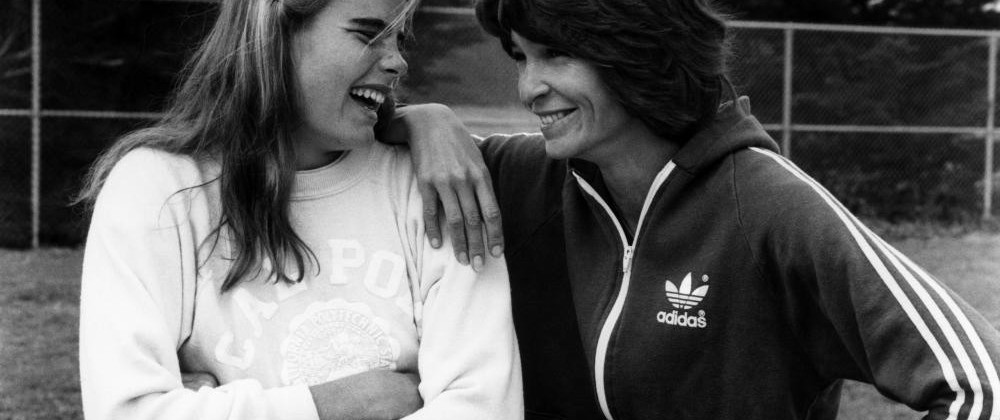
Personal Best didn’t take long, about a month.
Robert Towne speaking about scriptwriting at the Edinburgh Film Festival
Athleticism has traditionally denoted homoerotic activity in Hollywood cinema –but with the lifting of censorship laws, the change in the Production Code and the pervasiveness of frontal nudity in Seventies Cinema, a penchant for pounding on running tracks no longer signified covert sexuality. Yet for Robert Towne, a lifelong devotion to sport could finally see the light of day in his directorial debut, a gift from newly installed studio chief David Geffen that would prove decidedly double-edged, centring on a relationship between lesbian athletes, Personal Best (1982). Why make the leap to directing? He told critic Kenneth Turan some years later: “… even if someone is scrupulous about your text, tone is finally what’s important, and you can’t get that if you’re not willing to be there and insist on it.” [1]
Male or female, how do you compete with a body you have already surrendered to your opponent?
-Advertising for Personal Best
The specifics of the story were rumoured to be based on a scandal in the US track team, a claim that Towne has never corroborated or denied. But he did venture that the protagonists were
combinations of characters… in casting certain people, the minor characters, the athletes themselves became the characters. But the coach and the girls were all based on certain characters or combinations of them. [2]
The story might have been prompted by a chance meeting with athlete Jane Frederick in the weight room at UCLA in 1976. Peter Biskind makes the claim for it that “it was still another story about innocence despoiled, primitive grace, pre- or subverbal natural man, or in this case, woman.” [3] The film is unique in its two female leads (perhaps only The Turning Point, 1977, could boast a similar story of female rivalry and love/hate); in its utilising of the mythological (even fairytale) as narrative arc; and in its eliciting of an extended response among queer film theorists.
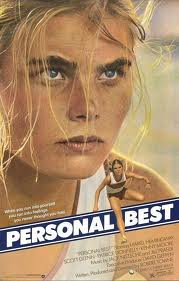
Towne wrote the screenplay at his bungalow on the Warners lot, racing ahead in order to beat a threatened actors strike. The film would go ahead despite several of the athletes leaving for the Moscow Olympics. Jack Nicholson turned down the role of coach and the part was offered instead to Scott Glenn. Towne then cast Mariel Hemingway (Manhattan) in the leading role of Chris Cahill, hurdler turned pentathlete, and Patrice Donnelly, a hurdling star, as Tory Skinner, a brilliant pentathlete. Hemingway trained for over a year in order to convince as a track veteran, whereas this was to be Donnelly’s acting debut.
Strictly speaking, a movie about athletes wouldn’t interest me… What interests me are issues…The issue in Personal Best I think was: How do you compete against someone you love? And the answer was: You don’t, you compete against yourself.
–Robert Towne [4]
Synopsis:
At the 1976 Olympic trials, successful Pentathlete Tory Skinner meets hurdler Chris Cahill, who is depressed at her poor performance. The two women spend an evening together and, after getting stoned and engaging in an arm-wrestling contest, they become lovers. Tory’s trainer, Terry Tingloff, is reluctantly persuaded to take Chris in hand, and she is eventually selected to run in the 1978 World Student Games in Cali, Colombia. She falls ill after eating fruit from a street market, and Tory nurses her through the night. The next day, Chris performs well while Tory does badly. Later, Terry proposes that Chris train for the Pentathlon. She is reluctant to compete directly with her lover and Tory is resentful at first, but on Chris’ birthday, gives her a Pentathlon training record book as a gesture of reconciliation. Later, Tory suggests that Chris lengthen her approach to the high jump, but accidentally moves the mark too far, causing Chris to injure her knee. Suspecting foul play, Chris spends the night at Terry’s place, and then leaves Tory. She meets water polo player Denny Stites and they become friends, eventually lovers. [5] At the 1980 Olympic trials in Oregon, Chris spots Tory, from whom she is now completely estranged; against Terry’s orders, she goes to wish her luck. As the Pentathlon proceeds, Tory falls behind and, in the last event, the 800 metres, Chris helps her out by forcing the pace, thus tiring out Tory’s main opponent, Charlene Benveniste, at the expense of her own performance. As a result of the race, however, both women qualify for the Olympic team. [6]
The 22 February 1980 edition of the script differs somewhat from the released film. Running 168 pages, it elides whole sequences –for instance the Maple Leaf event in Toronto pp. 43-6 is excised and replace with the Cali, Colombia World Student Games of 1978– and brings forward conversations from one scene and cuts them into another, so that the finished film, while having the main shape of the screenplay, also loses many of the more subtle aspects of characterisation on the page. It was probably written during the actors’ strike because the film had commenced shooting in Summer 1979. Towne’s personal relationship with his wife deteriorated at this time and there were substantial rumours about the nature of his relationships with both Mariel Hemingway and Patrice Donnelly, as well as the use of cocaine on the set, something which Towne has never denied. The film was Hemingway’s first role since making Manhattan (1979) for Woody Allen. [7]
Personal Best conforms to the generic categories of the sports film as follows: Mariel Hemingway is a gifted athlete, testing herself within the confines of her chosen career; the film however is not dealing with one of the top three popular sports subjects, boxing, football or baseball, but it does deal with a subject familiar to audiences from the Oscar-winning Chariots of Fire and perhaps Golden Girl, from a few years previously. That the protagonist’s internal struggle is the real antagonist does not especially hold true for Hemingway’s character, since she must deal with the overweaning good cop/bad cop influence of mentor Scott Glenn, who is her male lover, as well as dealing with her attraction to her fellow competitor, another woman, all of which contributes to her unravelling emotional state. Family is not an aspect of this narrative –Towne makes the interesting decision not to revert to the back-story after the introduction to the self-evidently troubled home– but the track activities are crucial to the unfolding story and the coach, fellow athletes and romantic relationships create an alternative to a family structure in the traditional sense, somewhat in the manner of a fairytale (whose subtext is always the re-forming of family). The person who espouses the motivational outlook which finally drives her to succeed is her final male lover, Denny Stites (Kenny Moore), who encourages her to do her ‘personal best.’ [8]
The 1980 Moscow Olympics was the event that mysteriously inspired a glut of Hollywood productions, yet ironically was decreed off-limits to U.S. athletes. Towne said of the disastrous decision that it could render the conclusion of his film devoid of meaning. Nonetheless, if the real-life athletes couldn’t compete officially, some of them got work as extras on several track and field films. Thus, when Towne was writing and preparing Personal Best it was at a time when the project would have a base in contemporary genre-oriented production. In terms of its dramatic narrative, the central relationship in the film is lesbian, a minor genre which had its examples. Commenting on Personal Best in the film adaptation of Vito Russo’s book The Celluloid Closet, ‘sexpert’ Susie Bright makes that point quite succinctly:
There’s a whole world of difference between how an audience looks at two men getting it on and two women getting it on. There’s a comfort with female nudity and female girlishness and kind of girly bonding, that it can be sexy and it can be completely palatable, even erotic. Women don’t find it threatening and men often find it completely unthreatening or titillating. [9]
The history provided both by Russo’s book and the documentary that followed is summed up in the phrase, ‘writing movies between the lines,’ a situation exacerbated by the introduction of the Hays Code (also known as the Production Code). As one commentator during the documentary notes, “it didn’t erase homos, just made them harder to find.” [10] It wasn’t really until the Eighties that homosexual characters began truly to be represented in their own right: however they became victimisers, for instance in Cruising (1980) and Windows (1980).
Writer/DirectorThe principal element that distinguishes the director’s authorial contribution above the screenwriter’s might be condensed into the pictorial, especially in the case of the writer/director. Towne’s visual choices are certainly influenced by his previous collaborators, especially Hal Ashby; however it is evident that in his decision to make what is essentially a sports drama that other aesthetic choices would drive his filmmaking style. It is certainly the case that he had a highly developed visual style as can be seen in all his screenwriting; and particularly in the case of Chinatown (1974) that the visual imperative of the film was Jake’s point of view, which is clearly delineated in the script. In Greystoke (1984) the degree of visual description clarifies his statement that in writing a screenplay he is describing something that has already been shot. It is pertinent to quote from the work since it exemplifies his visual precision and focus on movement, obviously here the emphasis being the depiction of the women’s physicality, a trait that is echoed in the variety of close-ups, long shots and varied shooting and editing rhythms.
Page one reads as follows:
FADE IN:
EXT. EUGENE STADIUM – DAY
A TARTAN TRACK
twenty inches away. Superimpose: OLYMPIC TRIALS EUGENE OREGON 1976. Droplets hit the speckled yellow surface and sink into it. O.S. an announcer with a vaguely apocalyptic tone calls out the lane assignments for the finals for the women’s hundred meter hurdles. More droplets hit the surface. VIEW SHIFTS and CAMERA TILTS UP to show:
THE WOMEN AT THEIR BLOCKS
for the start of the race. The droplets of perspiration hitting the track are from CHRIS CAHILL, on the inside lane, closest to CAMERA. She’s sweating so much she looks as though she’s already run the race. The announcer completes the lane assignments.
EXT. EUGENE STADIUM – DAY
THE STARTER
steps into position, his red-sleeved arm raising the pistol.
CHRIS
sees him out of the corner of her eye.
THE STARTER
Runners to your marks –
ALONG THE BLOCKS
rear legs scrunch up against the rear block.
CLOSE – CHRIS
breathing heavily
BEFORE HER
are ten hurdles. Sun glinting off the track makes them shimmer. The roar of the crowd seems to grow – then abruptly trails off into a hiss, with whispers of
“Gun’s up! Gun’s up!” – then silence.
THE STARTER’S VOICE
-get set–
CONTINUED
ALONG THE BLOCKS
everyone is poised to explode.
THE GUN
goes off.
THE HURDLES
Racing toward CAMERA are the eight finalists. Two of them hit hurdles -one of the girls goes sprawling.
PENNY BRILL
moves thru the field after a slow start. With each hurdle she seems to pick up speed, grow more aggressive.
AT THE SIXTH HURDLE – CHRIS
sees Penny skim by her. It throws her off stride and she begins to tie up.
AT THE FINISH
Penny Brill crosses first, Chris Cahill is fifth.
THE RUNNERS
continue down the chute, all in varying states of ecstasy.
(Personal Best: 1-2)
Thus from the starting blocks we have inscribed in dynamic fashion the metaphor of competition –the stress on Chris’ energy levels (she seems to have run the race before it has started) emphasises her youth (and relative inexperience) as well as her willingness to make an effort to succeed. Her competitive drive is etched on the rivulets of sweat coursing down her face. This sets up the dramatic arc for her character in an interesting and active way. Page one also serves to illustrate the degree to which Towne is conscious of auditory expression on film, matching sound effects to the visuals, which are cut vividly to demonstrate the degree of effort the hurdlers are forced to make. It is also notable that Towne uses the word ‘ecstasy’ to describe the women’s response to their intense experience, as though the race itself is foreplay for a bigger, sexual drama. The visual effect is such that the viewer feels not merely empathy but virtual participation.
If we are to begin to assess the evolution of Towne’s directing style, and hence his assumption of the mantle of another aspect of authorship, we might see here the shadow of Shampoo (1975), whose first scene, the aftermath of George Roundy’s lovemaking with Felicia, takes place in the dark. (The directorial decision to go along with Towne’s idea, to shoot the scene in the dark with the sound effects, emphasises Towne’s own keen awareness of the importance of sound effects on film audiences, with the heightened sense of auditory detail and scene-setting.) Towne’s theme – that of loss – is heavily underscored throughout the narrative as every aspect of the protagonists’ lives is a competition – on and off the track people have the potential to win or the misfortune to lose.
Towne used three directors of photography and acknowledged his debt to Olympia (1936), the Leni Riefenstahl film. He used different camera speeds to emphasize motion, which for him signified character: he admitted to being influenced by Robert Reagar’s swimming coverage. He reversed Riefenstahl’s technique, sometimes going from a speed to 120 to slow to heighten tension (the shot putt sequence) in “an attempt actually to underscore the way in which the athlete himself moved.” [11]
David Bordwell and Kristin Thompson’s photographic analysis of the Leni Riefenstahl documentary film demonstrates the elements common to it and the Towne production. According to the authors, Riefenstahl was limited in the way in which she could organise the shoot around the real-life athletes and “overcame this limitation by creating a variety of ingenious devices that could allow her camera crew to film from a distance (including using airships and aeroplanes) and from unusual angles. In this way, the solution to technical problems ended by enhancing the stylistic variety of the film.” [12]
Two of the stylistic components evident in Olympia may also be seen in Personal Best: the compositional framing wherein an object low in the foreground heightens the depth of the background; and the juxtaposing of alternating film speeds and editing rhythms which lends the films a fluidity and balances the more fundamentally dramatic aspects of the story in the case of Personal Best. These elements prove that Towne’s interest in the cinematic went beyond the mere duplication of action: he was keen to inscribe into his shooting methodology a style that reflected not only the philosophical ideals of the sport but also a visual expression of what the athlete might herself be experiencing.
Towne ascribes a great deal of importance to the size of shot and style of movement in communicating character:
… I think film does this, through movement rather than the traditional think where character is revealed through action. In film, the character is as often as not in movement.
Towne continues:
Part of what I am saying is that I saw, literally, the development of character in motion… I did not see a distinction between athletic action and character, and so much of the point of it was about the nature of competing and about the nature of how you square that with yourself in terms of someone you really care about, either defeating them or going ahead and trying to realize yourself the best way you can. These are two fundamentally different approaches to competition. That was the point of the film. [13]
This conjoins Towne’s philosophy as a writer with his filmmaking practice as he completes the project of authorship: the innate link between a character’s personal situation or occupation, and their position in life (and in a race). [14] The arm-wrestling scene in Act I provides an apt metaphor for the struggle between the central characters and indicates Towne’s deep understanding of the importance of visual language and symbolic gesture.
Personal Best provided a rare opportunity for feminist critics to engage in a queer reading of a mainstream film. Christine Holmlund says it is part of a new subgenre, the ‘femme film,’ part of a group of films which offered a change in the traditional cinematic representation of lesbianism. [15] Its release provoked an exchange of lengthy justifications and rebuttals in the pages of film journal Jump Cut, when Linda Williams’ defence of the film was answered by Chris Straayer discussing its portrayal of lesbianism on screen, and also made the crucial distinction between the interpretation of the film (or any film dealing with lesbian issues) from the perspective of a lesbian/feminist reading. Williams makes the point that:
… the combination of sports and sex was a stroke of genius. Those who would normally be shocked or at least irritated by a lesbian relationship in any other context find it quite ‘natural’ among female athletes who, it is presumed, are simply more physical than other people. The film thus capitalizes on public awareness of, and curiosity about, lesbian athletes like Billie Jean King while evading any real presentation of lesbian identity. [16]
Straayer responded to the points made by Williams, commenting that she had not investigated ‘the question of female viewer response.’ [17] Straayer argues that Williams is in danger of perpetuating homophobic myths by her insistence on the female/lesbian/audience imbibing the pre-arranged ‘male’ viewpoint in the absorption of images. [18] Straayer interrogates Chris and Tory’s relationship, noting that lesbian existence is necessarily a meta-identity that involves passing between two worlds, the heterosexual one and the lesbian community. This identity is forged from an acknowledgement of the self and an understanding of that identity created by others for you, what Straayer defines as ‘a co-existing awareness.’ [19]
This diversion into queer criticism is useful because it draws attention to the fact that it is not necessarily the content but the structure – the way the story is told – that is ultimately important: Towne’s authorial choices, reflected in his directing style, are what is of interest. Culturally speaking, Personal Best came about at a time of social and economic upheaval for women when the peak of the feminist movement was on the wane and it expresses real male confusion at the newly empowered opposite sex as well as awe (perhaps not very subtly expressed) at women’s physical prowess in performing traditional male sports.
Towne told Dale Pollock of The Los Angeles Times,
What I’m interested in is how you deal with a society that encourages competitions, and still care about other people. These two women are in love with each other. In order to place emphasis on who they’re making love to, you have to show it. But there are only two minutes of sex in the film; there are two hours of competition. [20]
Perhaps we should leave the last words on the queer interpretation to the writer since it is he who is pursuing the theme and content: Towne responded to criticisms of the film as follows in an interview conducted by Gregg Kilday for the Los Angeles Herald-Examiner:
…To me, anyway, women’s track is a little more revelatory, a little more theatrical…
“That [lesbianism] isn’t the subject of the movie… there is one love scene in the film compared to more than 30 minutes of the various competitions. What I wanted to do is just make their sexual relationship very matter-of-fact. The feeling and the caring between the two women is what’s important. I mean, I’m offended when Barbara Walters interviews Billie Jean King and asks her if she’s a lesbian. It’s just too simplistic. [21]
We should recall that in creating the role of Evelyn Mulwray in Chinatown, Towne had sensed there was a part of femininity that would always remain essentially inaccessible to the male psyche, and here, with both Chris and Tory, he would express this in such a way as to make the male characters curious, ignorant, and even admiring, of their sensibility. The pursuit of love and the pursuit of one’s ‘personal best’ is the narrative throughline; sexual success and personal compatibility are, it seems, some of the benefits of being a winner. The flipside of losing in competition was also that one could win in love – a theme that would persist in Without Limits (1998).
Endnotes
1 Kenneth Turan, ‘Robert Towne’s Hollywood Without Heroes,’ New York Times, 27 October 1988.
2 Towne in John. Boorman and Walter Donahue (eds.). Projections 6. London: Faber and Faber, 1996, 129
3 Peter Biskind. Easy Riders, Raging Bulls: How the Sex-Drugs-and-Rock’n’Roll Generation Saved Hollywood. New York: Simon & Schuster, 1998, 394.
4 Speaking at the 1998 Floating Film Festival
5 Towne himself had played water polo at college.
6 Taken from Monthly Film Bulletin, Vol. 50 No. 594, July 1983: 193.
7 During the strike Towne confessed his affair with Patrice Donnelly to his wife, who started divorce proceedings. When the film finally resumed shooting it was several months later.
8 See Ken Dancyger and Jeff Rush. Alternative Scriptwriting: Writing Beyond the Rules, Second Edition). Boston and London: Focal Press, 1995,for the genre characteristics of sports films, 67-68.
9 The Celluloid Closet (1993)
10 Ibid.
11 Speaking at the Edinburgh Film Festival.
12 David Bordwell and Kristin Thompson. Film Art: An Introduction, Fifth Edition, McGraw-Hill, 1997: 368.
13 Towne, ‘On Directing,’ in Boorman and Donahue (eds.), 1996, 123-124.
14 Director Nicolas Roeg says, “it’s the film itself that will complete his [the screenwriter’s] job.” Quoted in The Films of Nicolas Roeg by Neil Sinyard. London: Letts, 1991, 2.
15 Christine Holmlund, ‘When is a Lesbian Not a Lesbian? The Lesbian Continuum and the Mainstream Femme Film,’ Camera Obscura, 1991: 25-26, 145-178. The other films are Lianna, Entre Nous and Desert Hearts.
16 Linda Williams, ‘Personal Best,’ Jump Cut 27, July 1982: 10-11.
17 Chris Straayer, ‘Personal Best: Lesbian/Feminist Audience,’ Jump Cut 29, February 1984: 40. Straayer provides a brief overview of feminist film theory, referring to books like Popcorn Venus and From Reverence to Rape, which popularised the notion in the early 1970s at the height of the feminist movement, and then discusses Laura Mulvey’s seminal article, ‘Visual Pleasure and Narrative Cinema,’ whose Freudian/Lacanian approach coloured film theory for at least a decade and which itself provoked a wealth of commentary. Straayer however comments that further discussions of identification in cinema preferred not to use the psychoanalytical model because of its innately sexist premise and refers to Arbuthnot and Seneca’s discussion of Gentlemen Prefer Blondes in Film Reader No. 5 in which the authors engage positively with the film’s female role models and concludes, with the authors, that “identification is not in itself a male operation.” Op.cit., 41
18 Ibid.
19 Ibid.
20 Dale Pollock, ‘Towne: Toughing it Out to the Finish Line,’ January 29, 1982, L.A. Times, Calendar: 1.
21 February 5, 1982: D4-5. Elsewhere, Towne said it was about “two children … discovering who they are with their bodies.” Jack Kroll, ‘Chariots of Desire,’ Newsweek, 99.6, 8 February 1982: 60. Holmlund states that, “Production publicity further displaced the issue of homosexuality by emphasizing Donnelly’s status as an ex-pentathlete and Hemingway’s assiduous athletic training for her role.” Holmlund. Op.cit., 150. Following a deconstruction of the swift transitions from lesbian to heterosexual sex scenes, he concludes, “the moral of this story is: a lesbian, and especially a femme, is not a lesbian when there’s a man around.” (154)

